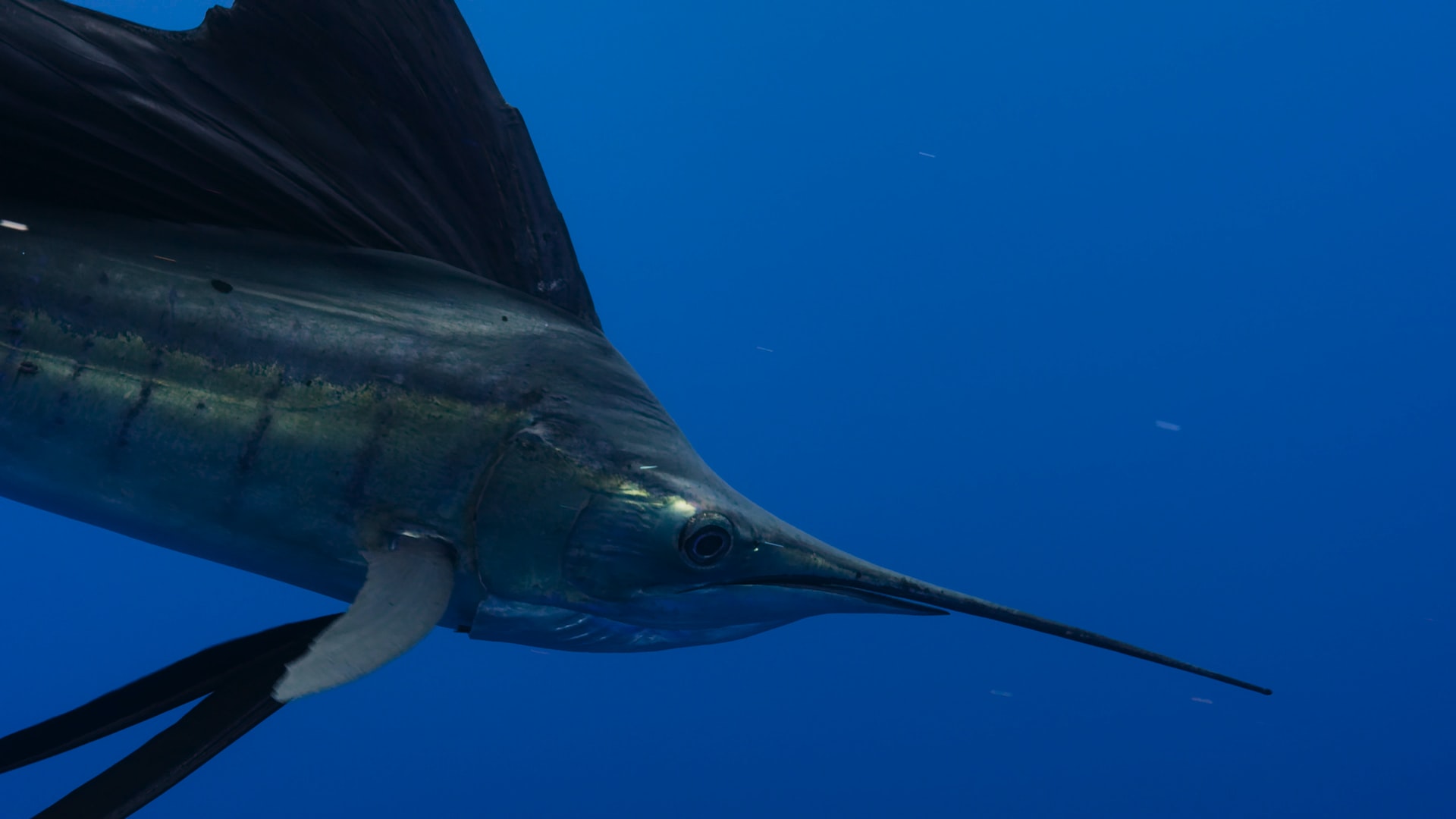
Theswordfish is a fish that is the stuff of dreams for many anglers. Reaching a phenomenal size, it always provides a memorable fight that requires very special equipment for big game fishing. Taking its name from its scientific name Xiphias Gladius, which in Latin means sword (Xiphios), this is its most recognised characteristic: its sword-shaped rostrum.
The specific shape of its body means it can reach speeds of over 100km/h, making it one of the fastest fish in the world.
To help you get the most out of your swordfish fishing, we'll look at where to fish for this species, as well as the best techniques to use depending on the circumstances and your preferences.
Our advice will then help you to select your tackle with the utmost care, because as with all fishing (for tuna and other tuna-like species, for example) if you are not properly equipped, you will not enjoy yourself and could even endanger yourself or your rod and reel..
The best locations
In tropical and temperate waters
.jpg)
Swordfish xiphias gladius can be found in many different parts of the world, so it's important to know where to find them. If you don't, you'll rarely come across this legendary species of fish.
You can find them in the tropical and temperate waters of the world's oceans:
- The Pacific Ocean
- Atlantic Ocean
- The Indian Ocean
This species likes to live in relatively warm waters, with temperatures ranging from 18 to 25 degrees depending on the region. You'll need to look for drop-offs, fairly deep canyons, ridges or wrecks. All these possibilities correspond to its lifestyle: it stays close to the bottom (200 to 600 m deep) during the day and rises to the surface at nightfall.
Its migratory behaviour differs according to the season, so you'll find it in cooler waters in summer and in warmer waters in winter.
In warm seas

As well as the oceans, you can find it in large numbers in the various seas that make up our planet. Temperate waters are perfectly suited to this species of Xiphias Gladius, which can grow to several metres.
You can look for them in the following seas:
- Mediterranean Sea
- Black Sea
- The Sea of Marmara
Rarely found close to the coast, you'll need to head out to sea if you want to maximise your chances of success. You'll need to look for ocean-like spots, wrecks, ridges, canyons and so on.
The evenings when there is a full moon will be more conducive to high activity and therefore an ideal time to fish. As a general rule, we recommend that you fish for this species from August to September, which is when you have the best chance of finding them, although the entire period from June to November is ideal for fishing in the Mediterranean.
Fishing techniques
.jpg)
This predator, which can reach record speeds, is not to be taken lightly, as you run the risk of breaking your fishing tackle and wondering how you got there.
The challenge is considerable, and you'll need to adapt your techniques as well as your rod, reel, tackle and so on.
Trolling is certainly the technique best suited to dealing with the power of this fish. You'll need a powerful 30/50lb rod, a 6/0 reel and natural bait on a large-diameter line. You can also rely on lures suited to this type of fishing, such as the Inchiku, which closely resembles a squid, being the preferred food source of the species you're after.
Other techniques are also possible:
- Deep-sea fishing
- Barrow fishing
- Jigging
You now know the broad lines that will enable you to go fishing for this legendary and unique species, which we are sure will provide you with some thrilling challenges.
But be warned, you'll need fishing tackle that's fully adapted to enjoy this swordfish. Your adventure won't go very far if you use the first rod and reel you come across.
Its speed, but also its weight, will push you to carefully select a trolling rod, a casting rod and a reel adapted to the selected technique.
Although it is not endangered, let's all do our utmost to respect and preserve it so that we never find ourselves in a situation similar to that of other species.
This trophy fish could well be one of your finest catches, so now that you've got all the cards in your hand, you know what you have to do!
You might also like to read :
